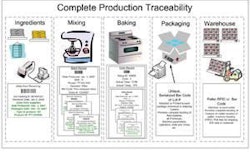
Consumers have a growing awareness of the role of nutrition in maintaining health and preventing disease, not only in their personal lives, but their family's as well, which often includes pets. Combined with a growing acceptance of complementary and alternative forms of medicine, and an increased access to information, especially via the internet, pet parents have become more concerned with pet nutrition.
Suddenly, pet owners are scrutinizing petfood labels for calories, ingredients and country of origin labels like they would a meal meant for their own dinner table. Kathryn E. Michel, DVM, of the University of Pennsylvania investigated this new philosophy behind buying food for the pets' bowl and found the reason why consumers buy what they do.
Nutrition pushed to the forefront of pet owners' minds soon after the 2007 petfood recalls. Pet parents started looking for information on dogs and cats' nutritional needs, and Dr. Michel says they often found it from veterinarians, family and friends, the media, the internet, groomers and trainers. Did you notice none of the consumers mentioned looking for information from the manufacturer or the nutritionists helping develop petfood formulas?
Instead, more and more often veterinarians have become the source of information for things like the safety and nutritional adequacy of commercial petfoods, alternative and unconventional diets and dietary supplements. If petfood producers take the time to understand why pet owners choose certain feeding practices, that would help facilitate:
- Discussion of options and alternatives to current feeding practices; and
- Influencing pet owners to modify their feeding practices.
According to Dr. Michel, when consumers are worried about nutrition they are most interested in the ingredients being used to make up their pets' diets. Common ingredient concerns include types and sources of ingredients: Does the package mention by-products, rendered meats, grain/grain-free or list additives? Another thing pet parents are looking for when they scan a petfood label: What ingredients are lacking?
Knowing what is in petfood is one thing, but knowing where and from whom these ingredients are coming from is another. More often, however, pet owners want to know about quality assurance (QA) practices your company has in place to ensure the safety of their four-legged family members.
- Do you have established vendors?
- What specifications do you hold your vendors to?
- Are your ingredients tested for nutrient content, microbiologic concerns and toxins?
- Do you use feeding trials as a standard for nutritional adequacy?
In order to communicate with consumers about their nutritional, ingredients and QA questions, Dr. Michel recommends addressing concerns instead of ignoring or avoiding them. Identify the specific concerns of the pet owner, correct misconceptions they may have and emphasize the importance of QA, she suggests.
If pet parents are becoming more concerned about the foods they are eating, it's only natural for them to start to have the same worries about the foods their pets are eating. Food is, as defined by a social constructionist viewpoint, a domain in which individuals define who they are in contrast to others.
According to Dr. Michel, pet owners will not only transfer their attitude about food to how they think their pets should be fed, but also may focus on how the pet's identity is defined by diet. When consumers begin to view their dogs' and cats' diets in this way, they will often begin to investigate alternative diets -- those that deviate from processed dry and canned wet petfoods -- like raw, frozen, refrigerated, holistic, vegetarian, vegan, natural, organic and home-prepared meals.
These types of foods appeal to many pet parents for multiple reasons, such as being viewed as more ethical, better for the animal, more "natural" for the animal or safer than traditional diets.
When pet owners turn to these unconventional diets in search of an answer to a pets' health problems, weight management or personal beliefs of their own, Dr. Michel reminds producers and manufacturers to pay attention.
- What are the owner's reasons for a new diet or feeding regimen?
- What does the owner perceive as being better or healthier about the diet?
- Educate your consumer base on your food and your diet and why it works!
- And remember, never be afraid to offer alternatives.
If you really want to know why pet parents buy the foods and treats they do, ask them. Build a relationship with your customers and be transparent. Once you can establish an open dialogue, you will begin to learn just what consumers are after when they are making meals for Fido and Fifi.
















